The spectacle of Baroque in Palermo: five churches to see in two days in the city
One of the main reasons for planning a trip to Sicily is the Baroque wonders scattered throughout the island, particularly in the Val di Noto, which moreover has been a UNESCO World Heritage Site since 2002. The regional capital, Palermo, can also be called a Baroque city, as there are many buildings from the period in the city. For our travel format, dedicated to five places to discover in two days, we go for the first time to southern Italy to discover five Baroque churches to see just in Palermo. Of course, we already know what our Palermo friends who are reading us have in mind: there are many more Baroque churches in the city. The ones we want to list here, however, are the ones not to be missed for any reason if you want to embark on a Baroque itinerary, or from which to start your own city tour. Let’s see them!
1. Church of Jesus, also known as “Casa Professa”
The construction of this building, one of the best-known symbols of Palermo’s religiosity, dates back to 1564 (in fact, the façade is in the typical forms of the late sixteenth century), by the Jesuit fathers, but it is only from the second half of the seventeenth century that the decoration for which the Casa Professa church is universally known was made. Upon entering its interior, one is almost overwhelmed by the richness of the stucco and “mixed marble” decorations (i.e., fine marble inlays depicting figures or plant motifs), and which adorn walls, columns, vaults, and ceilings. The stuccoes are the work of a talented Sicilian artist of the time, Procopio Serpotta (Palermo, 1679 - 1756), son of the great Giacomo, and the “frame” the frescoes, which were instead done by Antonio Grano (Palermo, c. 1660 - 1718). The exuberance of his decoration, which unfolds uninterruptedly throughout the building, is precisely the trait that made this church of wonders world famous. The mixed marble decorations, in particular, are among the most sumptuous in all of Italy.
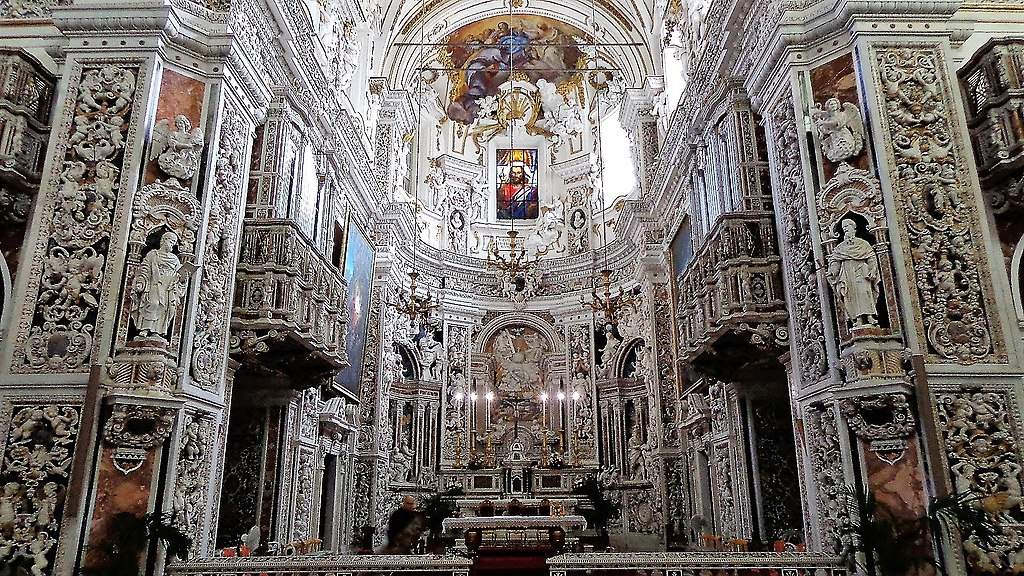 |
| Church of Jesus. Ph. Credit |
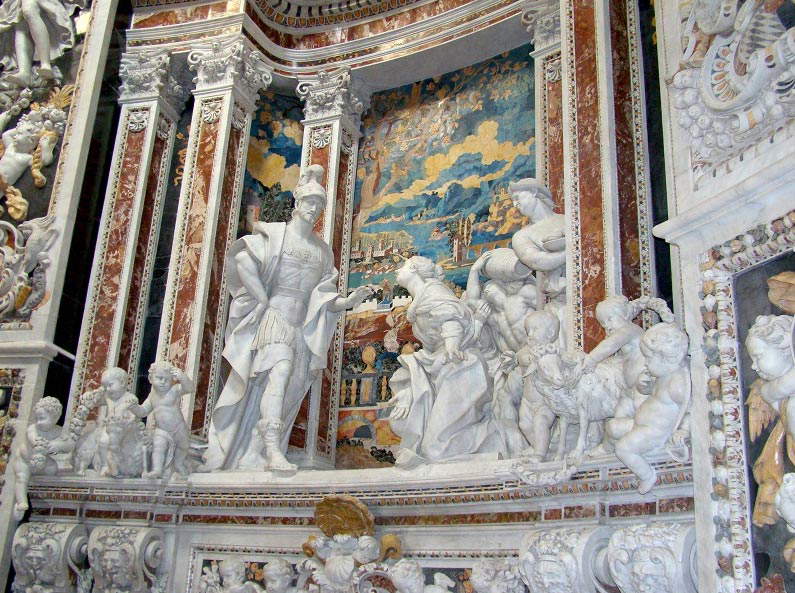 |
| Church of Jesus. Ph. Credit Metropolitan City of Palermo. |
2. Saint Catherine of Alexandria
Another church very rich in its decorations, which in certain parts resemble that of the Church of Jesus. It is located in the heart of Palermo: one of its entrances overlooks Piazza Pretoria. Reopened to the public in May 2016 after a long period of restoration that restored full legibility to its sumptuous interior, it is a church of ancient origins: in fact, it was founded in the early 14th century as the church of the monastery dedicated to St. Catherine of Alexandria. The church was entirely rebuilt in the second half of the 17th century (the facade still belongs to that phase of construction), while the Baroque interior dates from the following century. The opulent decorative apparatus serves as a rich “backdrop” to the works of the artists who worked for the church: among them painters Filippo Randazzo and Vito d’Anna, sculptors Ignazio Marabitti, Gioacchino Vitagliano, Giovan Battista Ragusa, Ignazio Marabitti, and Procopio Serpotta. The monastery can also be visited: the majolica floor of the fountain cloister is splendid.
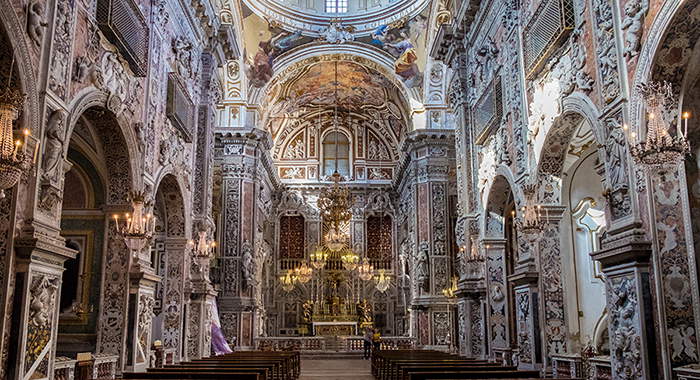 |
| Saint Catherine of Alexandria. Ph. Credit Municipality of Palermo - Tourism |
3. Santissimo Salvatore
The first house of worship on the site of the Santissimo Salvatore dates as far back as the 11th century, but the present building is due to the inspiration of architect Paolo Amato (Ciminna, 1634 - Palermo, 1714), who was responsible for its complete renovation in the second half of the 17th century, commissioned by the Sisters of the Order of St. Basil the Great. The new church was consecrated in 1704, but operations related to the making of the decorations went on throughout the 18th century. It is a unique church in Palermo because of its conformation: an elliptical plan inserted into a dodecagonal structure, which makes it decidedly unusual and scenic. The structure is then completed by two chapels, the dome of the presbytery and the large dome around which a walkway was built. The church was damaged during World War II, but then underwent a delicate restoration that, while not recovering the whole of what was lost (the frescoes of the dome for example are very fragmentary, unfortunately), still managed to restore its face. The church has undergone other interventions in recent years, and its opening is made possible by the Friends of the Sicilian Museums Association, who ensure that it can be fully visited. Because of its original conformation (it almost looks like a theater!), the church also served as an auditorium in the past, while today it has returned to being a house of worship.
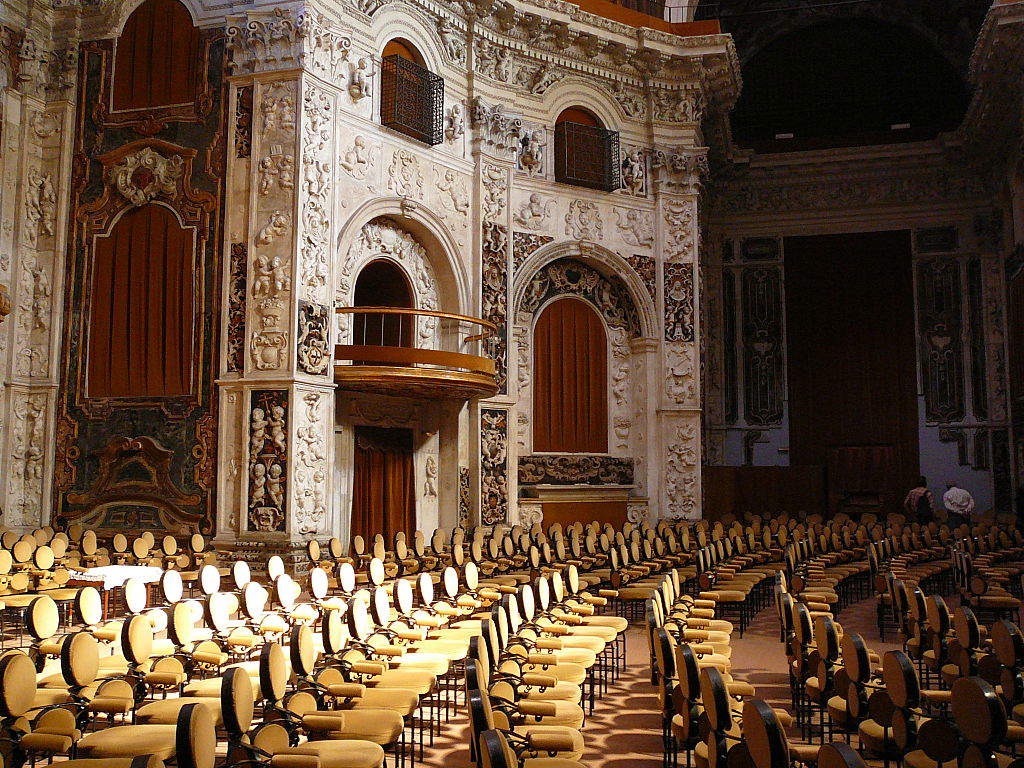 |
| Church of the Most Holy Savior. Ph. Credit |
4. Immaculate Conception at the Capo
Also known simply as the “church of the Conception,” the church of the Immaculate Conception at the Capo, which is located near the Palermo courthouse in the Capo district, near Porta Carini, has an all in all sober façade, but upon entering one is as if projected into another world, made, as with other churches in Palermo, of mixed marbles, stucco, twisted columns, and sumptuous frescoes. This is another convent church, attached to the former monastery of Benedictine nuns of the Conception (no longer extant today: it was demolished in the nineteenth century), and the present building was designed by Antonio Muttone (? - 1623), an architect about whom we know very little information (but we do know that he was of Lombard origin). The decoration of the interior went on until the late eighteenth century and could only be said to have been completed in 1740, when the painter Olivio Sozzi (Catania, 1690 - Ispica, 1765) made the ceiling decorations. Also inside are important altarpieces: of particular note is an Immaculate Conception by Pietro Novelli, one of the greatest Sicilian painters of the seventeenth century, which decorates the high altar and is almost the centerpiece of the decorative apparatus of the most important part of the church.
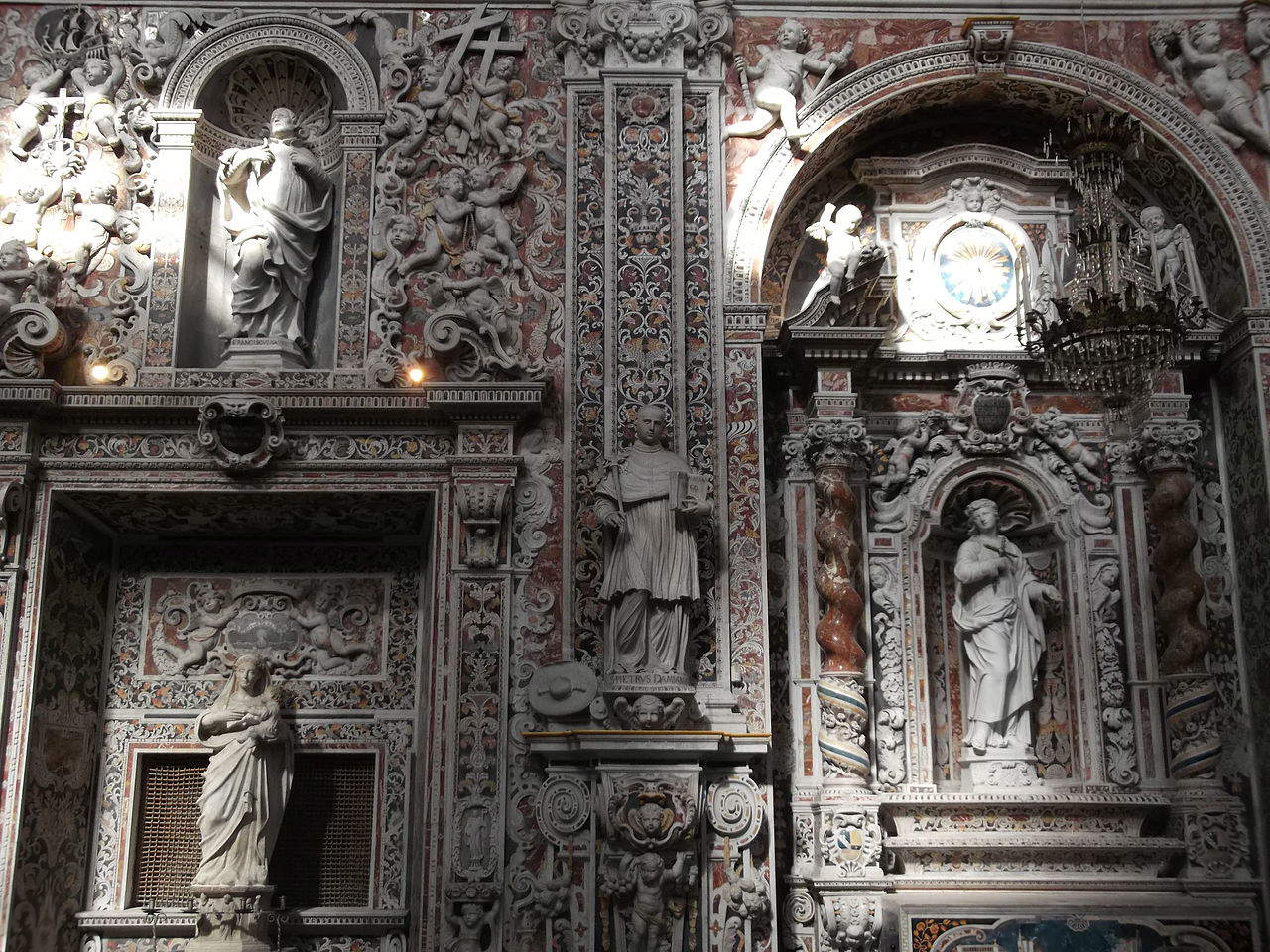 |
| Church of the Conception. Ph. Credit |
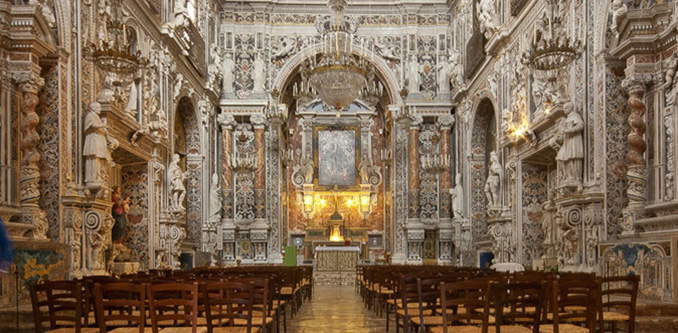 |
| Church of the Conception. Ph. Credit Municipality of Palermo - Tourism |
5. St. Joseph of the Theatines
Anyone who goes to Palermo to learn about the city passes by it because its facade overlooks the Quattro Canti square, one of the most visited places in Palermo. Indeed: the facade of St. Joseph of the Theatines is precisely one of the “four canti” from which the “unofficial” name Piazza Vigliena derives. And that would be enough to make it a must-see destination, but there is much more to discover than just the scenic facade. The church was built in the seventeenth century in all likelihood by the Ligurian Giacomo Besio (Savona, c. 1680 - c. 1650): St. Joseph of the Theatines represents his most famous work (according to other sources, instead, Besio helped the Neapolitan Pietro Caracciolo). The decoration of the interior makes great use of marbles of all colors, which give the church its particular and iconic appearance, which has few equals in Sicily in terms of the richness and variety of materials used. The 34 columns are all made of gray Billiemi marble. Inside are works by great artists such as Domenico Gagini, Pietro Novelli, Guglielmo Borremans, Olivio Sozzi, Giuseppe Velasco, Procopio Serpotta, and Andrea Palma. Looking up, it is impossible not to appreciate the frescoes that adorn the vault and depict The Triumph of the Saints and Blesseds of the Theatine Order, the work of Filippo Tancredi.
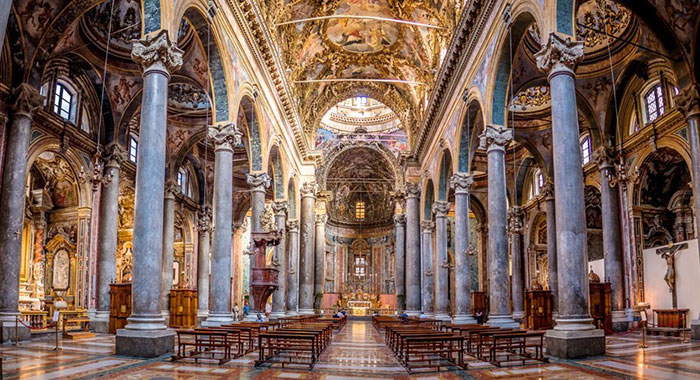 |
| St. Joseph of the Theatines. Ph. Credit Municipality of Palermo - Tourism |
 |
| The spectacle of Baroque in Palermo: five churches to see in two days in the city |
Warning: the translation into English of the original Italian article was created using automatic tools. We undertake to review all articles, but we do not guarantee the total absence of inaccuracies in the translation due to the program. You can find the original by clicking on the ITA button. If you find any mistake,please contact us.



























